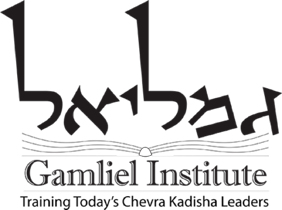Understanding Taharah Liturgy
The ritual of taharah is accompanied by a rich liturgy that forms the container through which the sacred space and spiritual work of the process are accomplished. This liturgy is composed of prayers and readings from the Tanach, weaving a complex fabric that supports and enables the actions of the taharah process.
Today’s taharah liturgy has a long history (for an overview click here). We know from the Babylonian Talmud (Moed Katan, Sotah, S’machot, Baba Batra, others) that Jews took great care to attend to the dead throughout most of our history. However, it wasn’t until the Kabbalists in the 14th through the 16th centuries that a ritual liturgy was developed for preparing the dead. This seems not to have been written down in a formal way until 1626, when Rabbi Aharon Berechia of Modena published a book called Ma’avar Yabbok in Mantua, Italy. This book detailed many things related to illness and death, and in particular, is the first record of a formal Kabbalah-based ritual for cleaning and preparing the dead for burial. Most modern taharah manuals in use today are based on Ma’avar Yabbok, employing the same ritual elements, readings, actions and goals as those detailed there.
There is no halachah for taharah. So although most Chevrot Kadisha use manuals based on the 1626 liturgy, their local customs and minhagim vary from community to community. Hence, one must not take written liturgy as law, but rather as the baseline upon which local custom is established and the vehicle through which souls are assisted as they move from this world to the next.
To begin understanding the liturgy, one must first understand the taharah ritual structure. This is outlined in the Taharah Details page. Most modern taharah manuals follow this structure. Two such manuals are listed at the top of the Taharah Details Page. The first of these two, Chesed Shel Emet, is designed to be used in teaching liturgy, whereas the second, To Midwife a Soul, includes chanting and was written for ease of use in the taharah room. Reviewing these will acquaint you with the detailed use of the liturgy during the procedure of taharah. Reading Chesed Shel Emet will give you a deeper understanding of the liturgical aspects of this ritual. Every specific section of the procedure includes a kavanah (intention) for that action along with the text to be read in association with the action, and both manuals mentioned here include such kavanot.
In today’s world, there is also a demand for Jewish rituals for non-Jews who are part of the Jewish community. Death in this realm has led to the development of a taharah-like ritual for these people (see Final Kindness: Honoring K’rovei Yisrael).
In addition, the following will help in understanding this liturgy:
- An overview of the kavanah associated with each action and liturgical reading in taharah (from Chesed Shel Emet)
- An example of taharah liturgy – the men’s readings and women’s readings from Chesed Shel Emet
- What is taharah ruchanit? A new approach to taharah liturgy has birthed during the coronavirus pandemic
- A conference taharah demonstration recording along with its PowerPoint slides (with extensive Q&A session at the end), taught by Rick Light at the 2010 Kavod conference
This page is meant to give you only a glimpse of this liturgy. Entire courses are needed to completely understand the depth of liturgy in Jewish rituals such as taharah. The Gamliel Institute offers courses in which this liturgy is explored and understood at a deeper level. If you have questions or wish to discuss this beautiful liturgy, please contact us.

